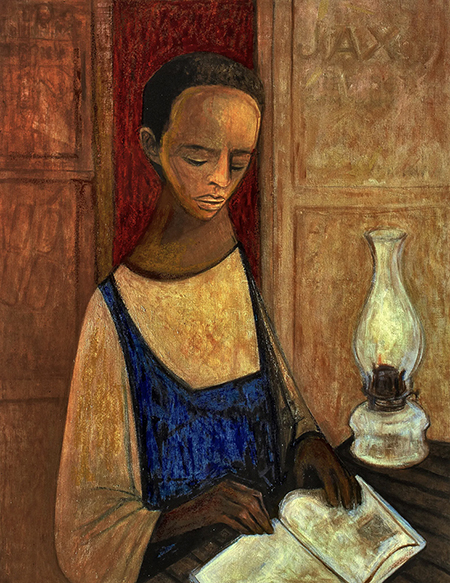
Some individuals leave large footprints in the sands of history. Dr. Samella S. Lewis was one of those. When Lewis passed at age 99 on May 27th she left a legacy that bridged artistic creativity and art historical scholarship, institutional leadership and curatorial savvy rarely equaled over the course of a transformative century.
At the time Lewis and Ruth Waddy published — with difficulty — the massive two-volume “Black Artists on Art” in 1969 those artists were regarded as marginal at best. Only a small handful of Black artists then enjoyed gallery support and museum validation, with legions effectively barred from the gallery entrance. Lewis’ brilliance and persistence in that book and elsewhere were emblematic, setting the tone for what has become clear only in the last decade. The culture of visual art today embraces far more than a deep bench of Black creative talent; its direction is now steered by that diversity.
Lewis’ generational peers include artists such as Noah Purifoy, Betye Saar, Charles White and Faith Ringgold, many of whom shared her passion for interpreting and elevating historical experience rooted in the abuses and injustices of racism, in order to demand equity. But they did far more than demand, they brought an image-based discourse into the cultural mainstream with grace, but without sacrificing the sharp edge of truth. In her own words and images Lewis indicted a ferocious past with a civility that past never deserved — except for the fact that such civility made her community and country healthier.
The brand of regional modernism that ran through Lewis’ art traces to her early experience taking studio art classes at Dillard University and the Hampton Institute under the tutelage of Elizabeth Catlett. Catlett was a humanist who sought to empathize with the subjects she painted. Lewis’ approach went beyond Catlett’s in that her aims were historical. Earning a doctorate in art history at Ohio State University may have limits her studio time, but Lewis’ purpose in such study was to illuminate the larger context in which Black art was evolving. She sought to correct the mistaken generalization that the antecedents of African art were “primitive.” Lewis also sought to promulgate the progressive social agenda of the civil rights movement.
Her instincts, both aesthetically and intellectually, were consistently populist, rooted in the conviction that art plays a key role in the everyday lives of ordinary people. It was an inclination that led her away from an early opportunity to embed herself at Los Angeles County Museum, where she briefly served as education coordinator. The match was premature, and led her to better understand that her mission was both closer to the grass roots and loftier than a mainstream museum could be. It led, in 1976, to her co-founding the Museum of African American Art (MAAA, 4005 Crenshaw Blvd., 3rd floor, in Baldwin Hills; not to be confused with the California African American Museum in Exposition Park) not long after Purifoy had co-founded the Watts Towers Art Center, and served as its director for ten years. Together with her teaching position at Scripps College aLewis’ association with the MAAA positioned her as a cultural influencer with an outsized reach.
Lewis’ ability to inspire and shape the careers of hundreds of practicing artists as well as scholars and curators was her primary genius. She spoke of the satisfaction she took from moving from one project to another across multiple disciplines. This genuine pursuit of personal satisfaction and her achievement of it in practice, even more than her large reservoir of knowledge and professionalism, is what lay at the core of that genius.
An irony of Lewis’ long career is that her art never made much headway in the marketplace. Her rare solo exhibitions were in academic settings — a rare exception was her one-person show in 1969 at Brockman Gallery, the pioneering space that helped shape the Leimert Park cultural district. Her work has made its way into museum surveys of Black art, such as the Hammer Museum’s unfortunately titled “Now Dig This!: Art and Black Los Angeles, 1960-1980.” I sense that Lewis will emerge as a key figure in the annals of art history. Happily, she was privileged to see that begin to happen in her lifetime.
